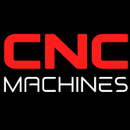The Future of American Manufacturing: Key Changes Expected in 2026

The Future of American Manufacturing: Key Changes Expected in 2026
The American manufacturing sector is on the cusp of significant transformation as we approach 2026. Driven by technological advancements, policy shifts, and evolving global dynamics, manufacturers are adapting to new challenges and opportunities. This article explores the pivotal changes anticipated in the U.S. manufacturing landscape in 2026.
1. Reshoring and Nearshoring Gain Momentum
In response to global supply chain disruptions and geopolitical tensions, U.S. manufacturers are increasingly bringing production closer to home. The trend of reshoring and nearshoring is accelerating, with companies investing in domestic facilities to enhance supply chain resilience and reduce dependency on foreign suppliers. For instance, Wistron has announced plans to establish new U.S. plants to support Nvidia's server production, aiming to commence operations by next year. ([Reuters](https://www.reuters.com/world/asia-pacific/wistron-says-new-us-plants-will-be-ready-nvidias-server-production-next-year-2025-05-16/?utm_source=chatgpt.com))
2. Technological Advancements Drive Smart Manufacturing
The integration of advanced technologies such as Artificial Intelligence (AI), the Internet of Things (IoT), and big data analytics is revolutionizing manufacturing processes. Smart manufacturing enables real-time monitoring, predictive maintenance, and enhanced operational efficiency. These technologies are becoming essential for manufacturers aiming to stay competitive in a rapidly evolving market. ([Wikipedia](https://en.wikipedia.org/wiki/Smart_manufacturing?utm_source=chatgpt.com))
3. Workforce Development and Talent Acquisition
The manufacturing industry faces a significant workforce challenge, with a projected need to fill 3.8 million jobs by 2033. However, nearly half of these positions may remain unfilled due to skill shortages and an aging workforce. To address this, companies are investing in training programs, apprenticeships, and partnerships with educational institutions to cultivate a skilled labor pool.
4. Increased Domestic Investment in Manufacturing
Major corporations are committing substantial investments to bolster domestic manufacturing capabilities. Eli Lilly, for example, has pledged over $27 billion to construct new pharmaceutical manufacturing sites in the U.S., aiming to create thousands of skilled jobs. Similarly, Apple plans to open a significant server manufacturing facility in Houston, supporting its $500 billion investment in various initiatives over the next four years. ([Investopedia](https://www.investopedia.com/eli-lilly-latest-us-company-to-commit-to-domestic-investments-11686928?utm_source=chatgpt.com), [Houston Chronicle](https://www.houstonchronicle.com/business/article/apple-houston-ai-server-manufacturing-20183749.php?utm_source=chatgpt.com))
5. Policy and Economic Factors Influence Manufacturing Dynamics
Economic policies, including tariffs and trade agreements, are reshaping the manufacturing landscape. The implementation of new tariffs and the reevaluation of existing trade deals introduce both challenges and opportunities for manufacturers. Companies must navigate these changes strategically, balancing cost considerations with the benefits of domestic production and supply chain resilience. ([The Times](https://www.thetimes.co.uk/article/theres-no-going-back-to-normal-after-trumps-tariffs-enterprise-network-8n7x956vn?utm_source=chatgpt.com))
Conclusion
The American manufacturing sector in 2026 is poised for significant transformation, characterized by increased localization of production, technological integration, proactive workforce development, and strategic investments. While challenges such as labor shortages and policy uncertainties persist, the industry's adaptability and commitment to innovation position it for sustained growth and competitiveness on the global stage.


